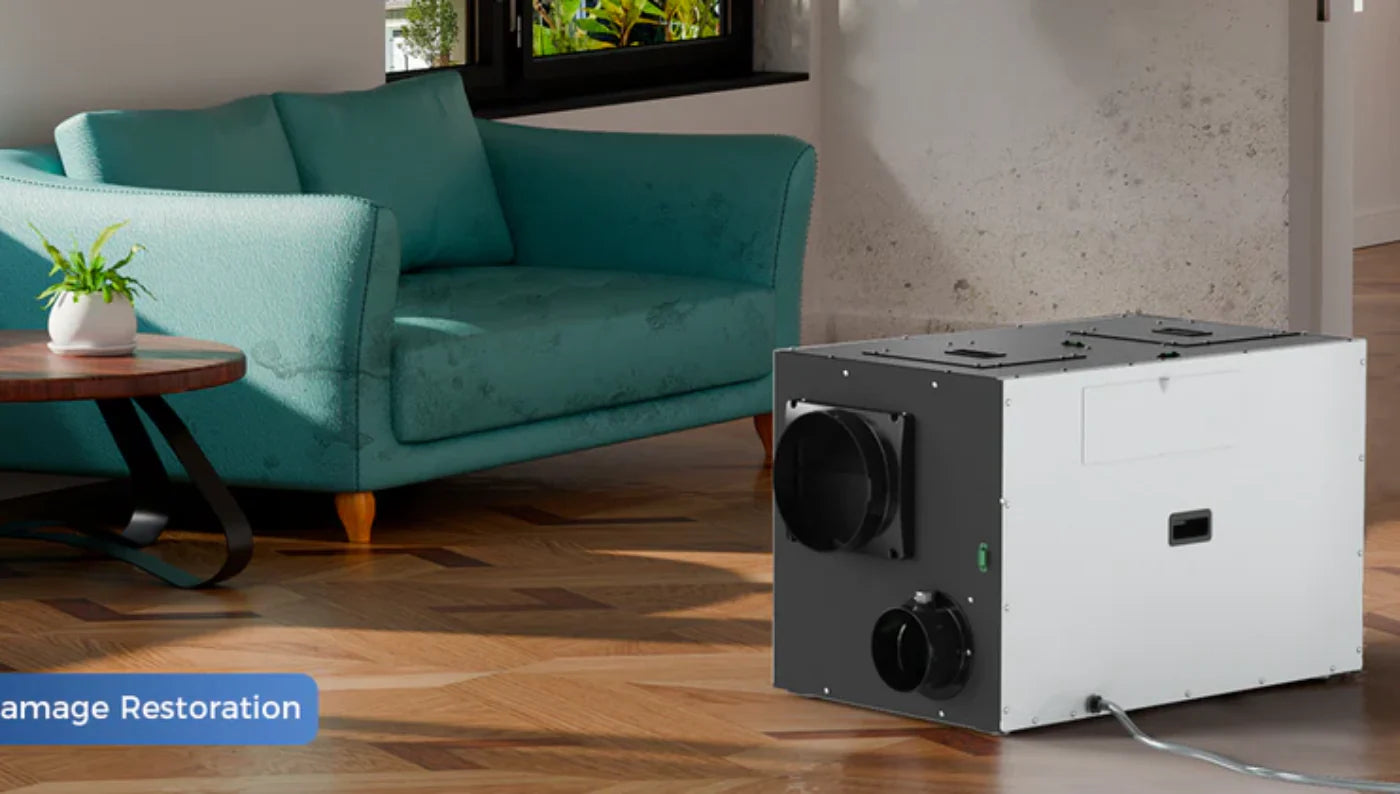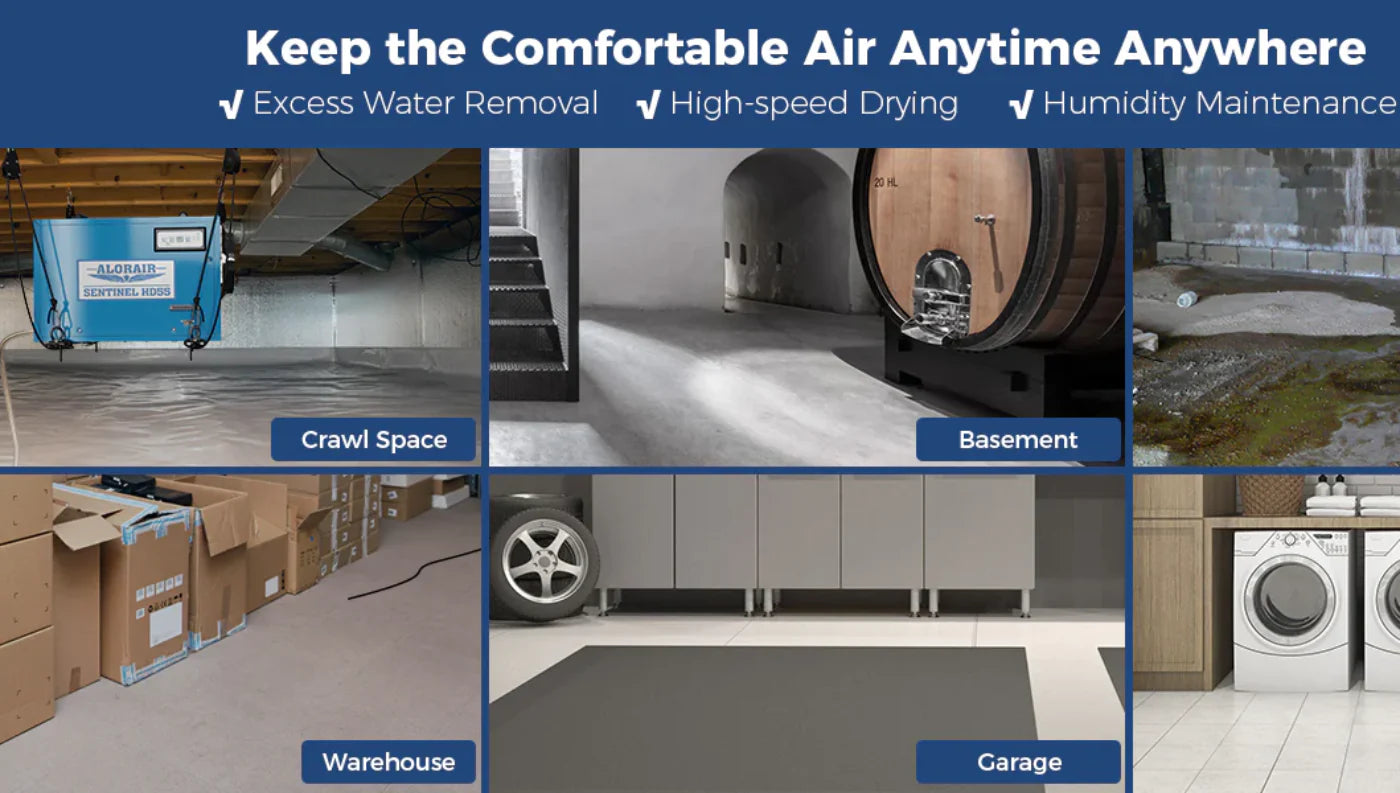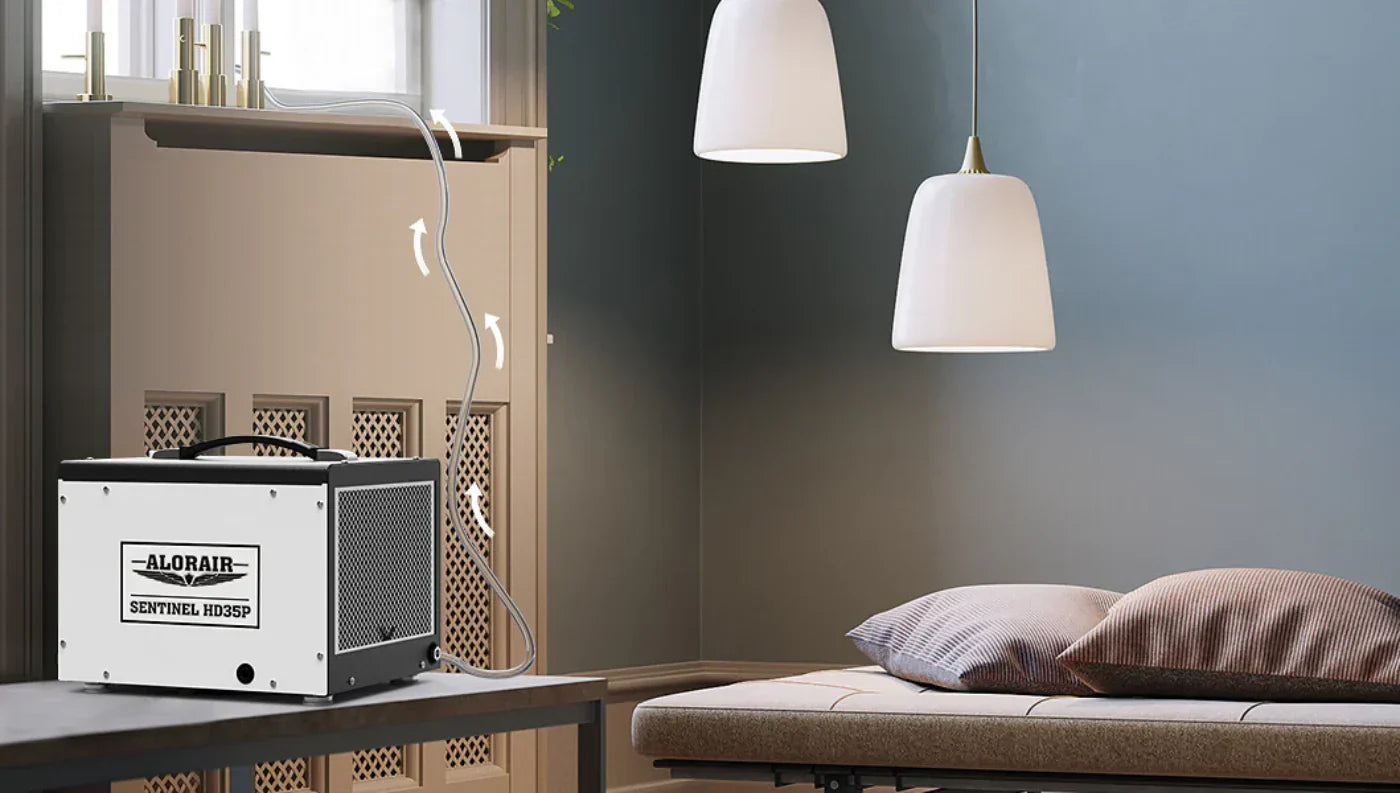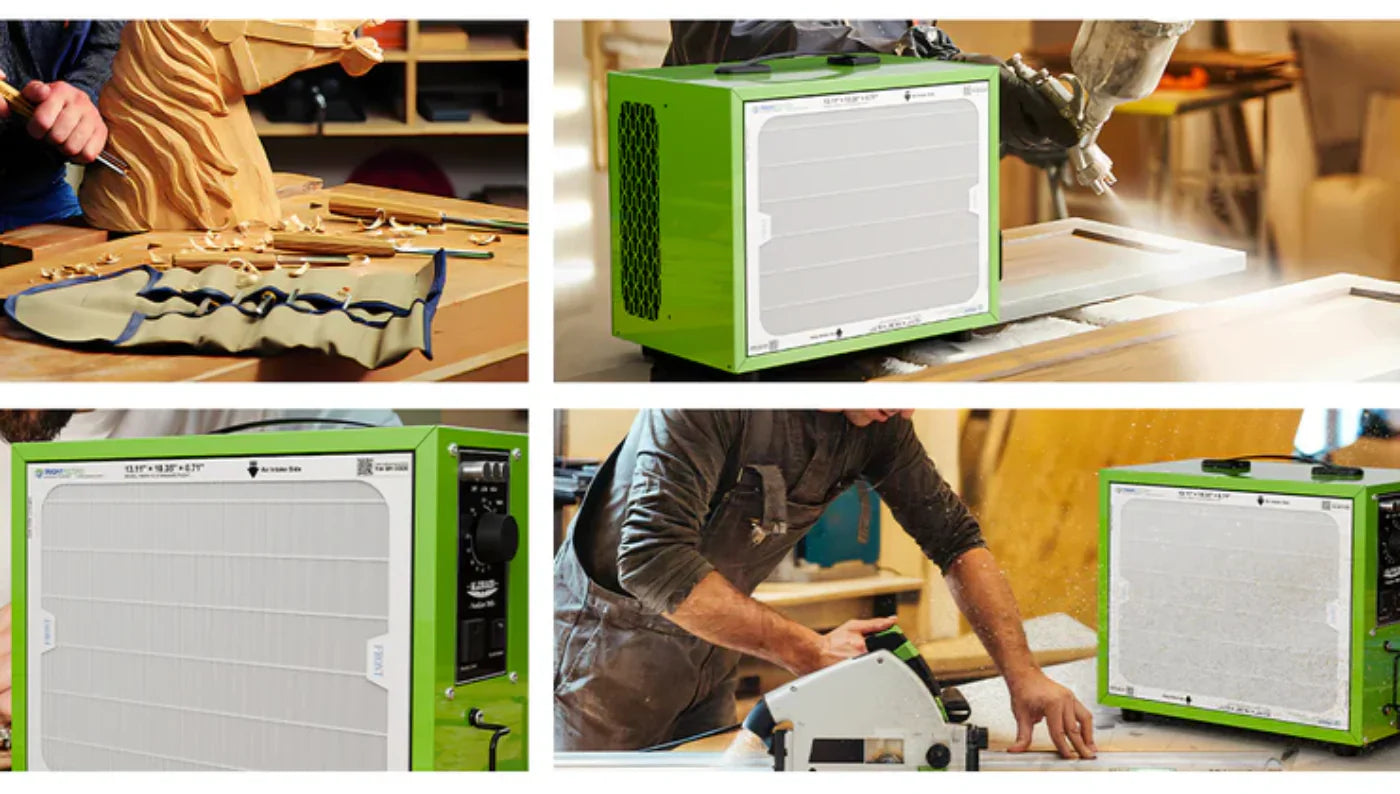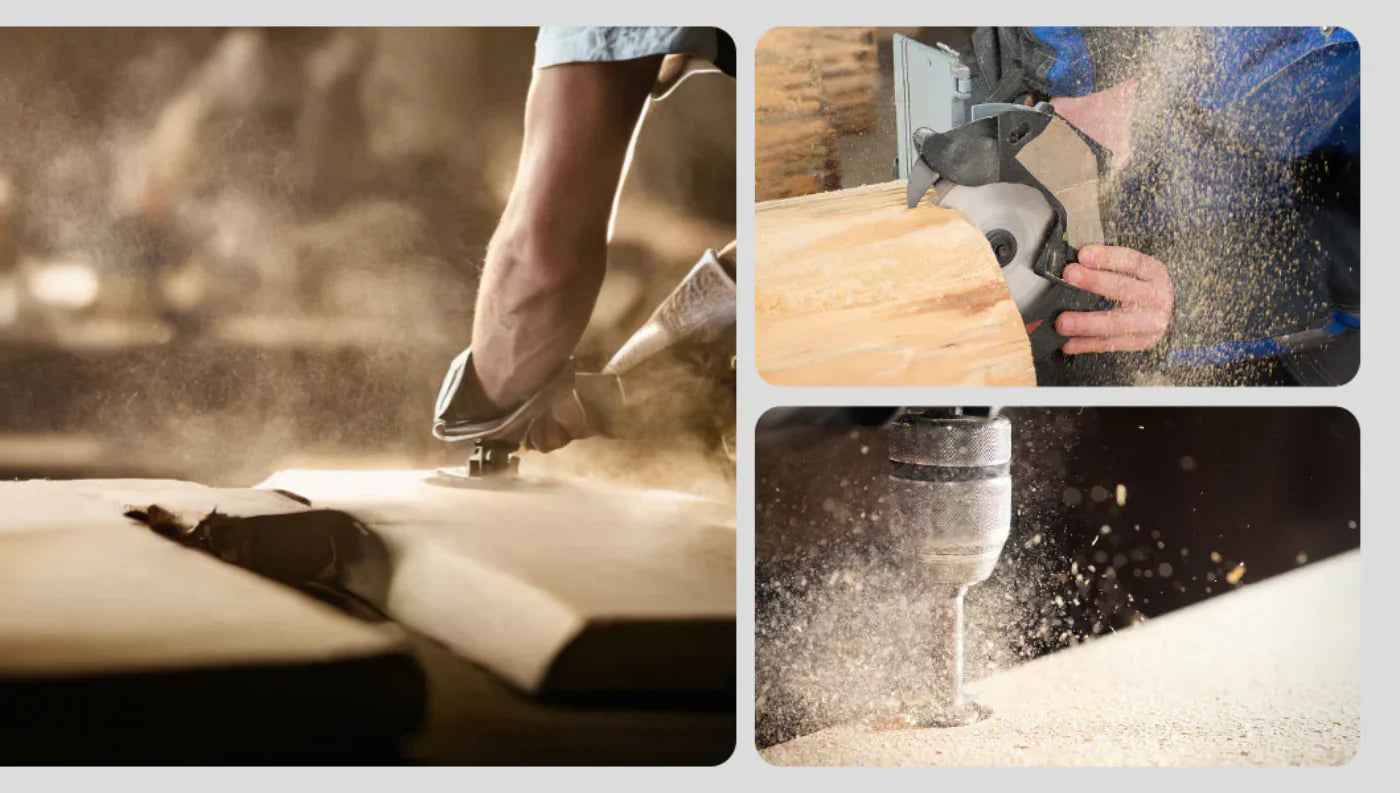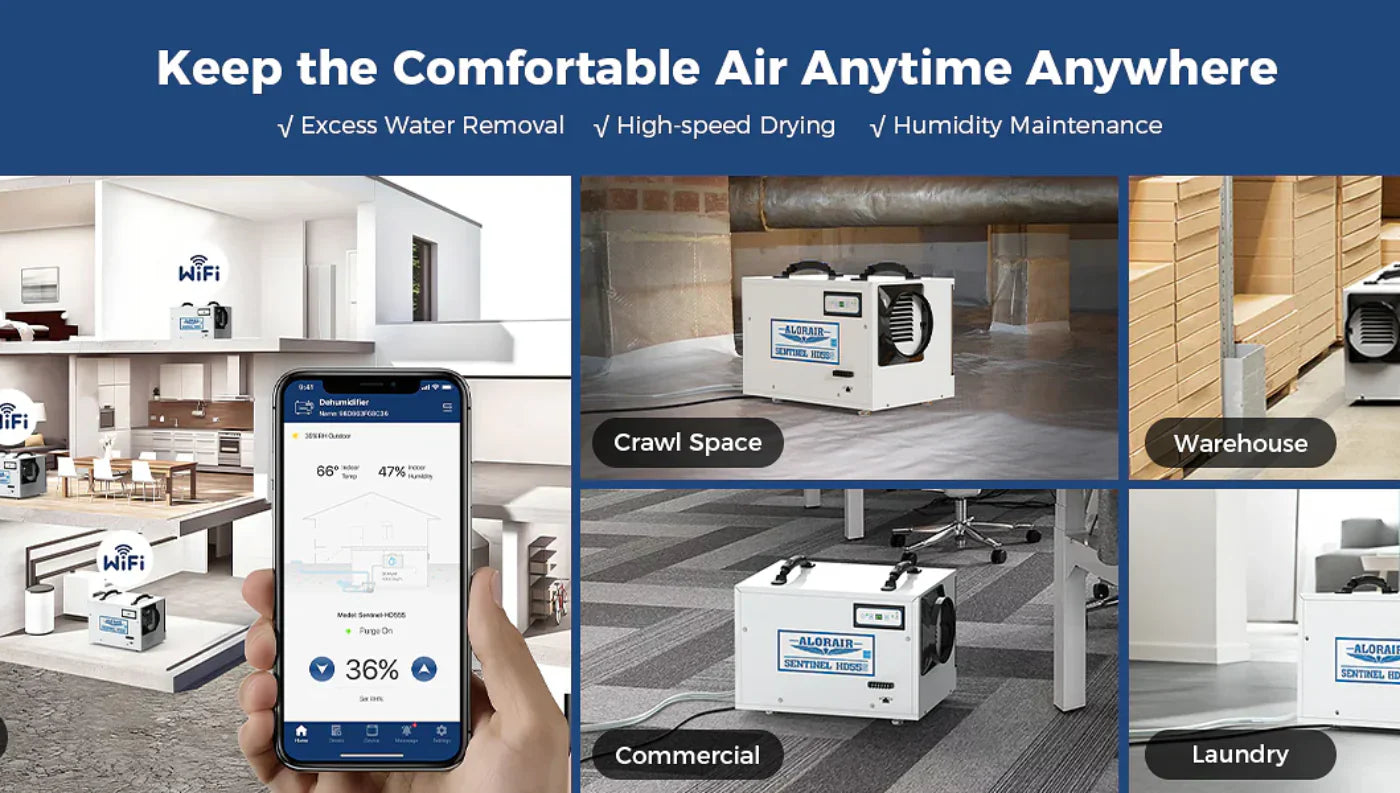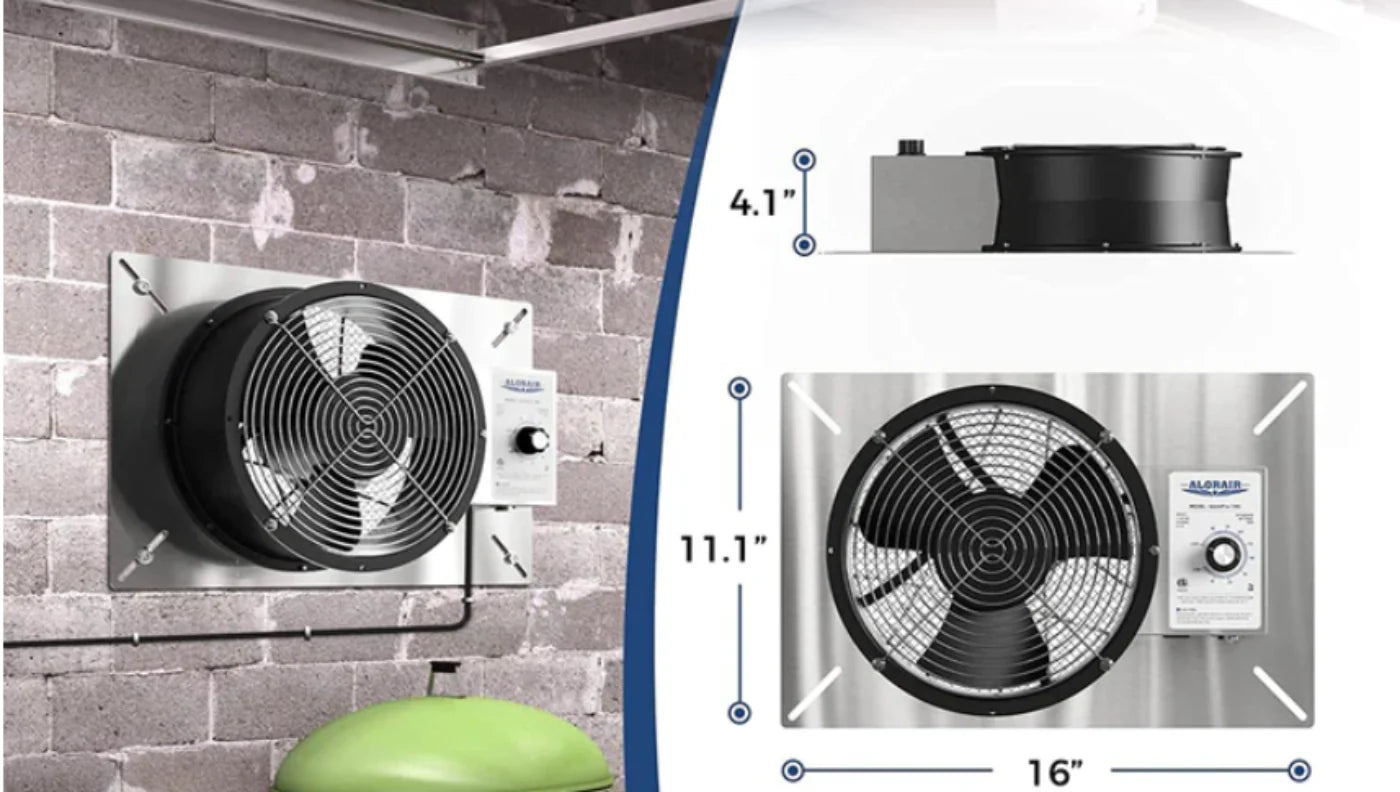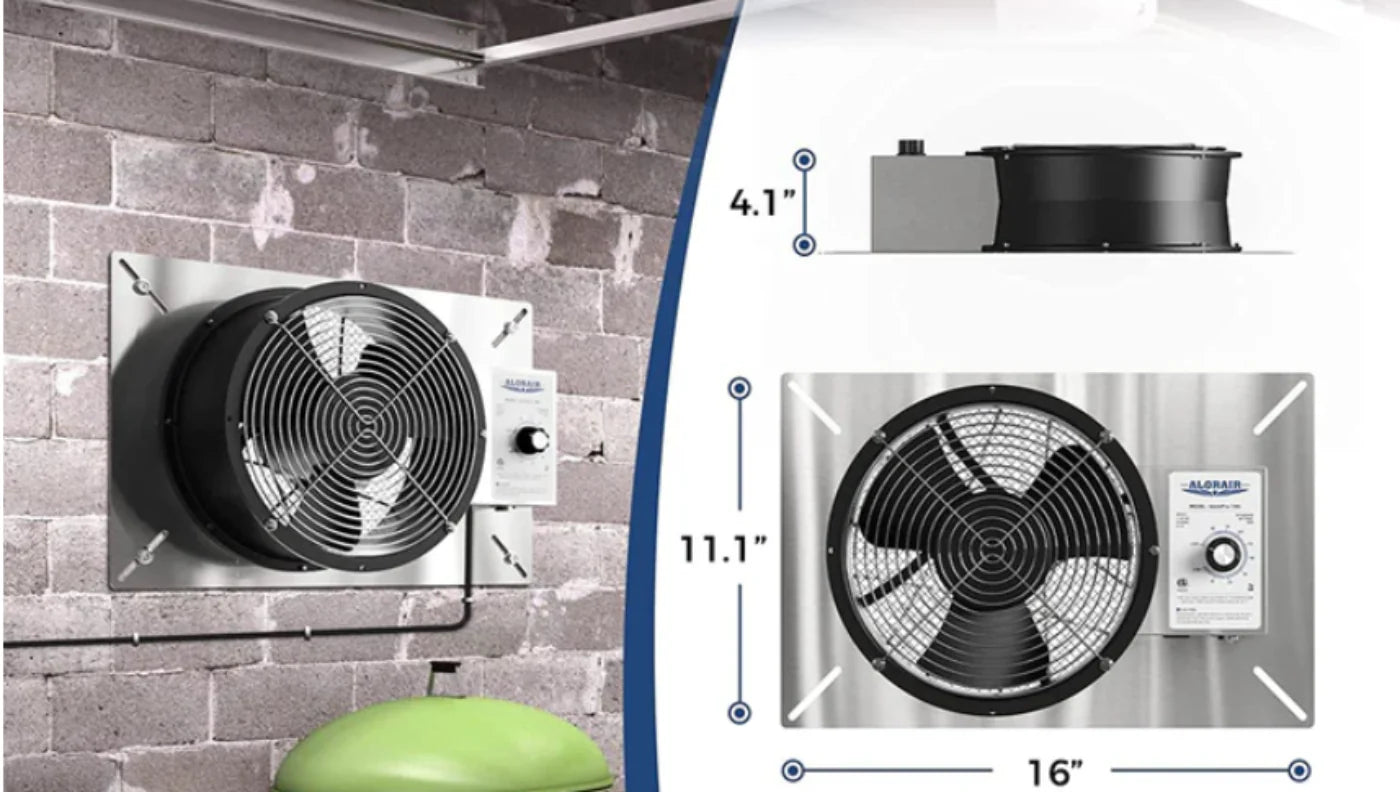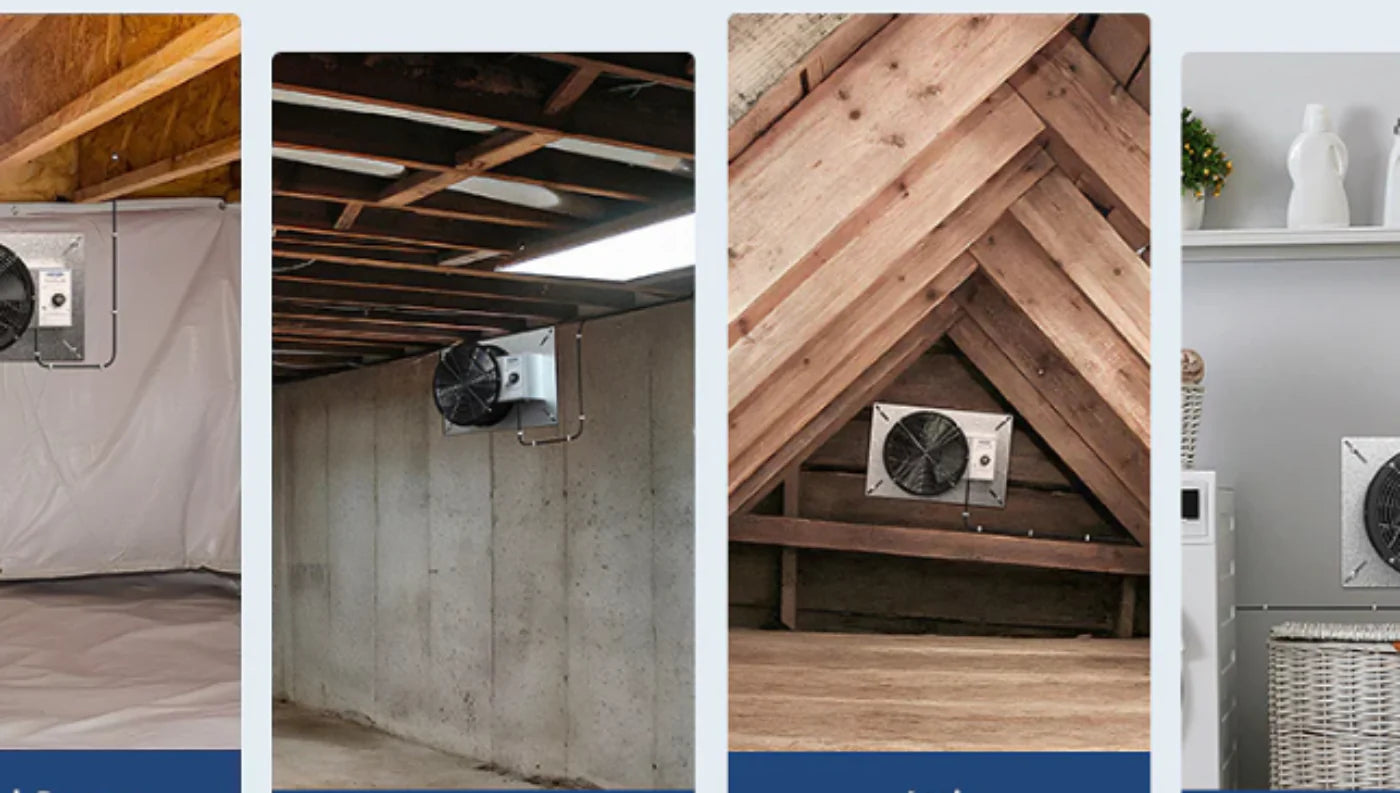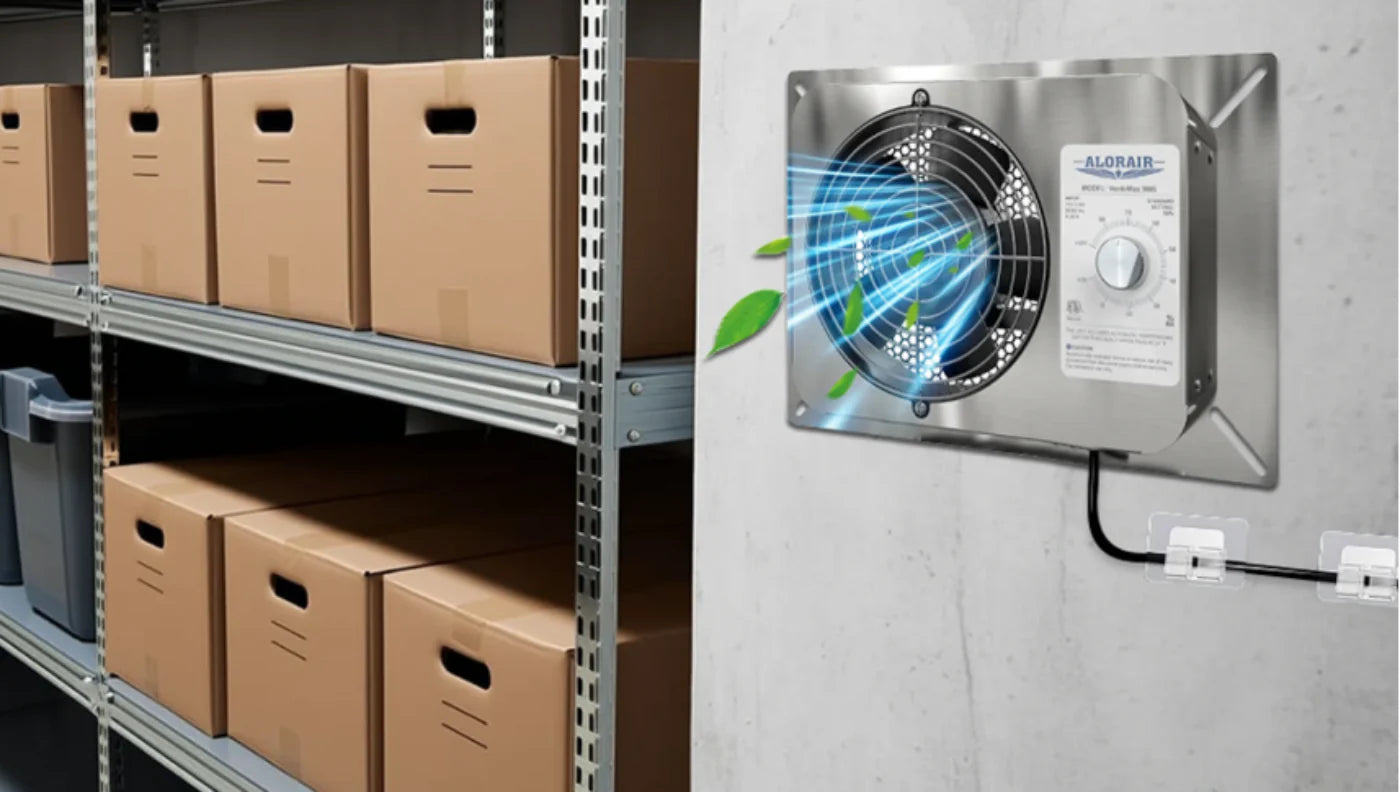Airtight houses are getting increasingly famous because of their energy efficiency and decreased noise pollution. However, though these advantages are notable, they can also catch pollutants, moisture, and dry air due to poor ventilation. Airtight houses, although superb for energy savings, can lead to serious health issues.
Proper ventilation is the key to healthy indoor living and improved indoor air quality in airtight homes. So, understanding how to ventilate an airtight house efficiently is necessary for your health and comfort. In this blog, we’ll dive into the best ventilation methods for airtight homes, their benefits, and tips to enhance air quality. If you’re looking for the proper home ventilation system, stick to the end to learn about practical solutions.
Why We Need Ventilation in Airtight Homes?
Ventilation plays a critical role in pulling out pollutants and keeping up healthy indoor air quality. In airtight houses, minimum outdoor air gets in, which can be a double-edged sword. Although it lowers energy loss, it can cause bad air quality and raised humidity.
Pollutants such as CO2, VOCs, and extra dampness can gather in airtight homes, paving the way for a range of health issues. These are some signs of poor ventilation in house:
Respiratory Issues
Bad air quality can disturb the lungs, giving rise to coughing, wheezing, and trouble breathing. People with asthma or allergies might be especially sensitive to these issues.
Mold Formation
Extra moisture and humidity confined indoors can develop a perfect environment for mold formation, which can lead to asthma attacks, allergies, and other respiratory issues.
Allergy Symptoms
Airborne allergens such as dust mites, pet dander, and pollens can assemble in badly ventilated houses, magnifying allergy symptoms for sensitive people.
Condensation on Windows
Moisture expansion can bring destruction to window bodies and other wooden structures.
Stale or Musty Smells
Persisting odors are signs of poor ventilation in house and specify a lack of air circulation.
Poor Air Quality
Without adequate ventilation, toxins, allergens, and pollutants can gather, impacting your health.
If you’re looking for a solution regarding ventilation for your airtight house, Alorair Crawlspace comes with a variety of practical ones.

Methods for Properly Ventilating an Airtight House
Now, you must be wondering how to ventilate your house, particularly one that is airtight. Specific techniques and ventilation ideas can make all the difference. Below are a few of the most practical methods:
1. Use Mechanical Ventilation Systems
One of the most helpful ways to ventilate an airtight home is to use a mechanical home ventilation system. Mechanical ventilation systems are tailored to spread air efficiently all over your house.
The systems work by pulling in clean air from the outline while throwing out old air from the house. This assists in extracting pollutants and sustaining healthy indoor air quality. Mechanical ventilation is typically available in different types, including ventilation fans, balanced ventilation systems, heat recovery ventilators (HRVs), or energy recovery ventilators (ERVs).
Every kind has its own benefits and drawbacks, so it's important to select the one that best fits your home’s budget and preferences.
You can choose from several types like:
Supply Ventilation Systems: Introduce fresh air into the house.
Exhaust Ventilation Systems: Expel indoor air to the outdoors.
Balanced Ventilation Systems: Bring fresh air in while expelling stale air, maintaining a balanced flow.
Although there’s not enough evidence on when to install a mechanical ventilation system in a house. But there’s some agreement that if the home is attaining below 3 to 7 air changes in an hour at 50 pascals (Pa) mechanical ventilation should be installed.
This proactive strategy for ventilation makes sure that clean air arrives in your home constantly, to remove pollutants and moisture. When it comes to ventilation for airtight homes, mechanical systems are highly effective.
2. Install Heat Recovery Ventilators (HRVs) or Energy Recovery Ventilators (ERVs)
Heat Recovery Ventilators (HRVs) and Energy Recovery Ventilators (ERVs) are innovative ventilation systems, that are very energy-efficient and can aid in keeping up your home’s energy efficiency while enhancing ventilation.
This is a great choice for airtight homes. These systems retrieve heat from the outgoing air and move it to the incoming air, lowering the energy required to chill or heat your home.
The chief difference between HRVs and ERVs is the way they interchange heat. HRVs utilize a heat exchanger to shift heat between the incoming and outgoing air drifts, and ERVs use a desiccant wheel to soak up dampness from the outgoing air and secret it into the incoming air.
HRVs: Ideal for homes in colder climates, where heat needs to be retained.
ERVs: Better suited for warmer and more humid areas, as they also transfer moisture to balance humidity levels.
These ventilation systems make sure that clean air gets into your home without disturbing energy savings, making them one of the perfect alternatives to improve ventilation in house.
3. Use Exhaust Fans in High-Moisture Areas (Bathrooms, Kitchens, and Laundry Rooms)
Exhaust fans are required to remove moisture and prevent mold formation in high-humidity spaces such as kitchens, bathrooms, and laundry rooms. Running exhaust fans in these areas helps sustain indoor air quality, extract humid air, smells, and toxins and put a stop to issues like mold and mildew.
The best places to use are:
Bathroom Exhaust Fans: To get rid of dampness after hot showers.
Kitchen Range Hoods: To remove smoke, steam, and cooking smells.
Laundry Room Fans: To take out humidity created during drying and washing.
4. Ventilate Crawl Spaces and Basements
Crawl spaces and basements can be the origins of moisture and mold issues as they are mostly abandoned and badly ventilated. By offering proper ventilation to these spaces, you can take a step to avoid moisture growth and enhance overall indoor air quality.
For this, you require innovative tools _ a ventilation fan like the Alorair 720CFM Crawl Space Ventilation Fan particularly made for these areas. These tools can make a big difference in air circulation, reducing dampness, preventing mold, and ensuring your stored objects are secure from damage.
Moreover, coupling a ventilation fan with a dehumidifier can improve moisture control in these often confined spaces.
Whether you want a sophisticated ventilation fan or an energy-efficient dehumidifier for crawl spaces and basements, AlorAir Crawlspace excels in designing high-quality products.
Common Challenges of Ventilating Airtight Houses
One of the major challenges of ventilating an airtight house are following:
Finding the Right Place
The main issue while ventilating is finding the right place between energy efficiency and sufficient air interchange. Although airtight buildings help lower heat loss, it can also make it complicated to clear out contaminants and sustain healthy indoor air quality.
Energy Efficiency Loss
Drawing in clean air can cause energy loss if not controlled properly. You need to sweet spot between clean air and the energy loss that will occur.
Cost of Installation and Maintenance
Some systems like mechanical ventilation systems and exhaust fans could demand beforehand investment and constant maintenance.
Balancing Humidity Levels
Maintaining the proper balance between too little and too much humidity can turn complex. These challenges can be addressed by choosing the right home ventilation system tailored to your specific needs.

Benefits of Proper Ventilation in Airtight Houses
Appropriate ventilation in airtight homes provides several benefits including:
Minimizing Moisture Damage
Ventilation in airtight houses hinders condensation, mold formation, and harm to windows and walls.
Improving Indoor Air Quality
Removing dead air, toxins, and allergens and introducing good indoor air promotes better overall well-being.
Energy Efficiency and Comfort
Running systems like HRVs and ERVs allow for lower cooling and heating charges by retrieving heat from the outgoing air and shifting it to the incoming air.
Better Respiratory Health
With ventilation, good air quality lessens respiratory issues such as asthma, allergies, and chronic obstructive pulmonary disease (COPD).
Reduced Allergy Symptoms
By getting rid of pollutants and allergens from the air, proper ventilation can help reduce allergy symptoms such as runny nose, sneezing, and itchy eyes.
Enhanced Comfort
Proper ventilation can help to maintain a comfortable indoor temperature and humidity level, reducing the need for excessive heating or cooling.
Tips for Maintaining Air Quality in Airtight Homes
Even with a well-designed ventilation system, maintaining optimal air quality in your airtight home requires some ongoing attention. Here are a few simple tips:
Replace ventilation system filters regularly
Replacing air filters routinely in your ventilation system is necessary to ensure optimal performance. Blocked filters can hinder air circulation and lower the system’s efficiency in extracting pollutants. Refer to your system's manual for recommended filter change intervals.
Use Air Purifiers and Monitor Indoor Air Quality
Consider using an air purifier to remove allergens and pollutants. Keep track of your home’s humidity levels and airflow using monitors.
Observe humidity levels
Maintaining a moderate indoor humidity level (ideally between 30% and 50%) is important. Invest in a hygrometer to monitor humidity levels and consider using a dehumidifier to keep moisture levels stabilized. Aloraircrawlspace also carries dehumidifiers of all types.
Conclusion
Proper ventilation is crucial for the health and comfort of any airtight home. Having a thorough knowledge of how to ventilate an airtight house effectively can prevent moisture issues, improve air quality, and enhance energy efficiency. Even if it's installing a ventilation fan for specific areas or integrating an advanced home ventilation system, maintaining good airflow is essential.
For the best in-home ventilation and air quality solutions, visit AlorAir Crawlspace. Discover our high-quality ventilation fans, specially designed for crawl spaces, basements, and airtight homes. Don't let stale air ruin your comfort – reach out to our customer service experts today and find the perfect ventilation solution for your needs!



